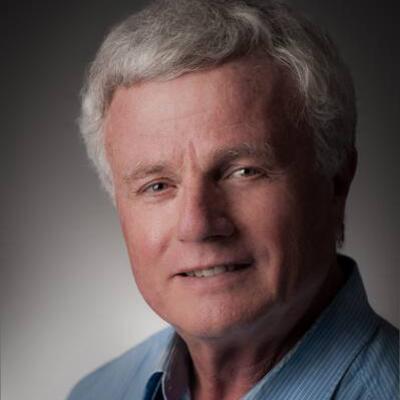Presidents column: The siren and the solution
At the start of 2018 I attended two back-to-back conferences. Although they were unrelated, together they provide an interesting storyline for this column.
The first was the 98th Annual Meeting of the American Meteorological Society, which this year was held in Austin, Texas. There were 4200 participants from the U.S. and many other countries attending technical sessions (both oral and poster) organized under numerous Conferences, as well as a vast array of town hall meetings, lectures, keynote speeches, and side panel discussions. One Conference of particular interest was “Climate Variability and Change”. A key session in this Conference was a presentation of the Climate Science Special Report , which was recently released by the U.S. Global Change Research Program. This report is noteworthy for a number of reasons. First it provides concrete evidence in clear, unambiguous terms about how humans are the primary cause of observed recent climate change. The report highlights that global warming is in evidence, with annual average surface temperatures increasing globally by about 1.0 0C over the past 115 years, and that it is extremely likely the cause of this warming is related to the anthropogenic emission of greenhouse gases to the atmosphere. These emissions, mainly associated with the burning of fossil fuels for energy production, also result in changes in other aspects of our global climate, including melting glaciers, diminishing snow cover, shrinking sea ice, rising sea levels (16-21 cm so far), ocean acidification, and increasing atmospheric water vapor. The report warns that sea level rise could exceed 1 meter by the end of this century, Heavy rainfall events, heatwaves, and forest fires, are increasing in intensity, and will continue to increase. The report further notes that the magnitude of climate change beyond the next few decades will also depend primarily on the amount of greenhouse gases (especially carbon dioxide) emitted to the atmosphere. Although emission growth rates have slowed recently as economic growth becomes less carbon intensive, the rate is still well above the levels allowed to limit global warming to <2 0C by the end of this century.
Another noteworthy aspect of this report is that it’s release was approved by our current U.S. Government Administration that is openly hostile to the notion of human-cause climate change; an administration that is rapidly undoing regulations designed to limit greenhouse gas emissions, and that is promoting the growth of the fossil industry at the expense of clean energy alternatives. Thus, the report is a warning siren to ongoing and impending climate disruptions that directly contradicts our Administration’s own pro-fossil policies.
Immediately following the Annual Meeting, I participated in the 8th IRENA General Assembly and in side events connected with the World Future Energy Summit in Abu Dhabi, UAE. Here the solutions in response to the warning sirens issued by climate scientists are clearly highlighted. IRENA is moving forward on many fronts to provide information, tools and events to help all member countries expand their renewable energy programs. The General Assembly featured a number of side events, such as a Ministerial event on Scaling Up Investment, where we learned about the key factors, such as competitive costs and investor confidence, that will result in rapid growth of renewable energy over the decades to come. A major initiative of IRENA is its Coalition for Action, which is a membership-based international network established to advance renewable energy in order to drive the global energy transition in line with the Sustainable Development Goal 7. Last year ISES became a member of the Coalition, and this year both Joanna Costello of ISES HQ and I attended their annual strategy meeting, held during the WFES. A key initiative of the Coalition is its #Renewables4Climate Campaign, which was launched during COP23 in Bonn in November 2017. Other activities revolve around working groups, and during this year’s General Assembly two working groups, the Business and Investors Group, and the Community Energy Sub-group, released white papers on Scaling Up Renewable Energy Investments in Emerging Markets and on Community Energy. There are also a Communications working group and a newly-formed 100% Renewable Energy working group. ISES will be involved in both of these activities.
Members of the multi-stakeholder @IRENA Coalition for Action gathered this week at Agency HQ to share 2017 experiences and plan cooperation in the year ahead. #IRENA8A pic.twitter.com/sT5zgryimU
— IRENA (@IRENA) January 18, 2018
ISES is a member of the Board of Directors of the Global Solar Council, and I represent the Society on this Board. The first Board meeting of 2018 was held during the WFES. The Council’s CEO, Jodie Roussell, recently resigned her position, and there are no immediate plans for a replacement. Nevertheless, the Board discussed a work plan that will enable the Council to continue to move forward to grow international solar markets and support policy initiatives.
I also participated as a panelist in the International Solar Alliance (ISA) Forum held as a side event during the WFES.
"#innovation must continue" David Renné @isolaralliance #wfes2018 pic.twitter.com/QNrqCCmoeG
— ISES Solar Energy (@ISES_Solar) January 17, 2018
The ISA, representing an alliance of 121 countries lying fully or partially between the Tropics of Cancer and Capricorn, was formed at COP21 in Paris through an agreement between the Government of France and the Government of India. With 48 countries currently having signed the framework agreement, and 19 countries ratifying the agreement, the ISA has now become an International Treaty-Based organization under the United Nations Charter. The Forum focused on discussions relevant to the growth of solar energy in ISA countries, such as investment, R&D, and networking opportunities, best practices, financial risk mitigation, and meeting demand for off-grid solar.
In summary, my January travels showed how the sirens warning us of the risk of climate are getting louder and more urgent, while the solutions to these risks become ever more apparent and realistic.
